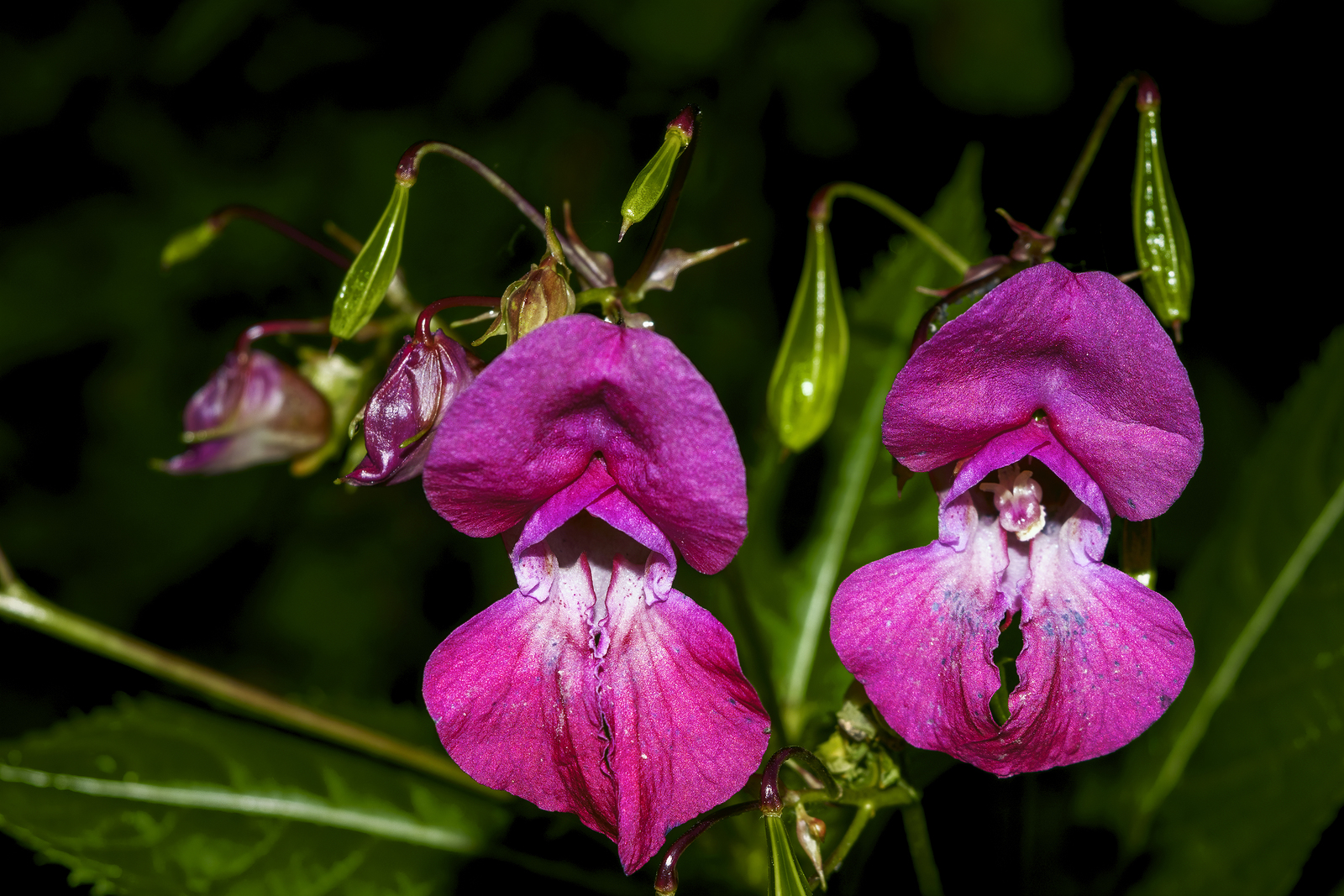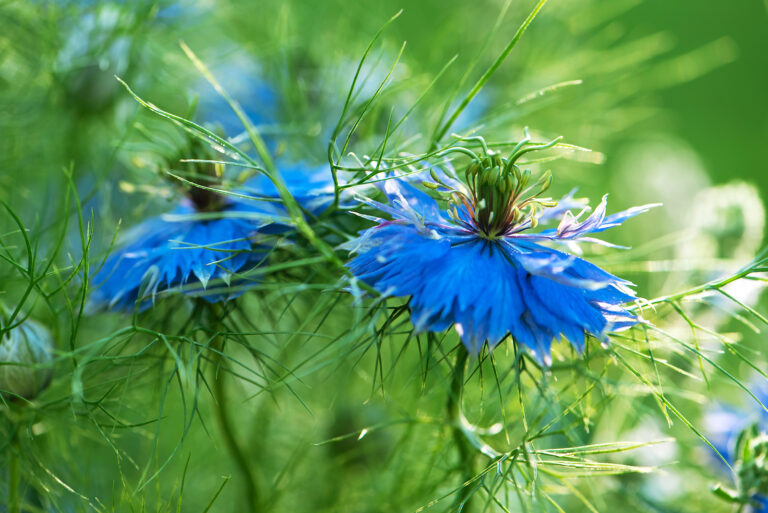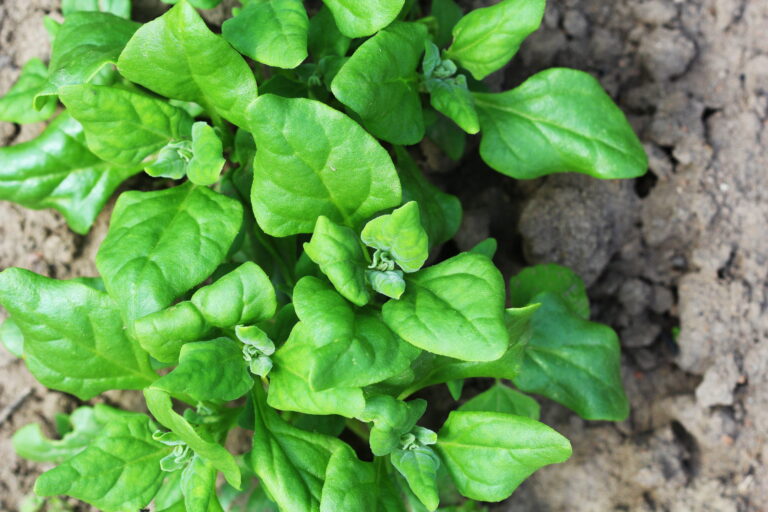How to Grow and Care for Snapdragons -Antirrhinum
Snapdragons, Antirrhinum, are known for their colorful, upright spikes of fragrant flowers in a wide range of bright and pastel colors. Snapdragon cultivars include some that grow just a half foot tall and others that grow to 6 feet (182cm) tall.
Tall and intermediate-sized Antirrhnum provide vertical color and accents in the garden. Dwarf forms can be used for edging, pots, and rock gardens. Antirrhinum of medium height is suited for most gardens since they are good for cutting but do not require staking.
Antirrhinum prefers cool weather. In most regions, they can be planted for bloom from spring to summer, but in mild-winter regions, they should be planted for bloom from winter to spring and then again in autumn.
Snapdragons are native to the Mediterranean region. The flowers have a fanciful resemblance to dragons’ heads–or butterflies.
Flower Garden Success Products at Amazon:
- Wildflower Seed Mix Attracts Hummingbirds and Butterflies
- Eden Brothers All Perennial Seed Mix
- 10 pcs Stainless Steel Garden Hand Tool Set
- Gorilla Cart 4 Cu. Ft, 300-pound Capacity
- Neem Bliss 100-% Cold Pressed Neem Oil
- Safer Brand Insect Killing Soap
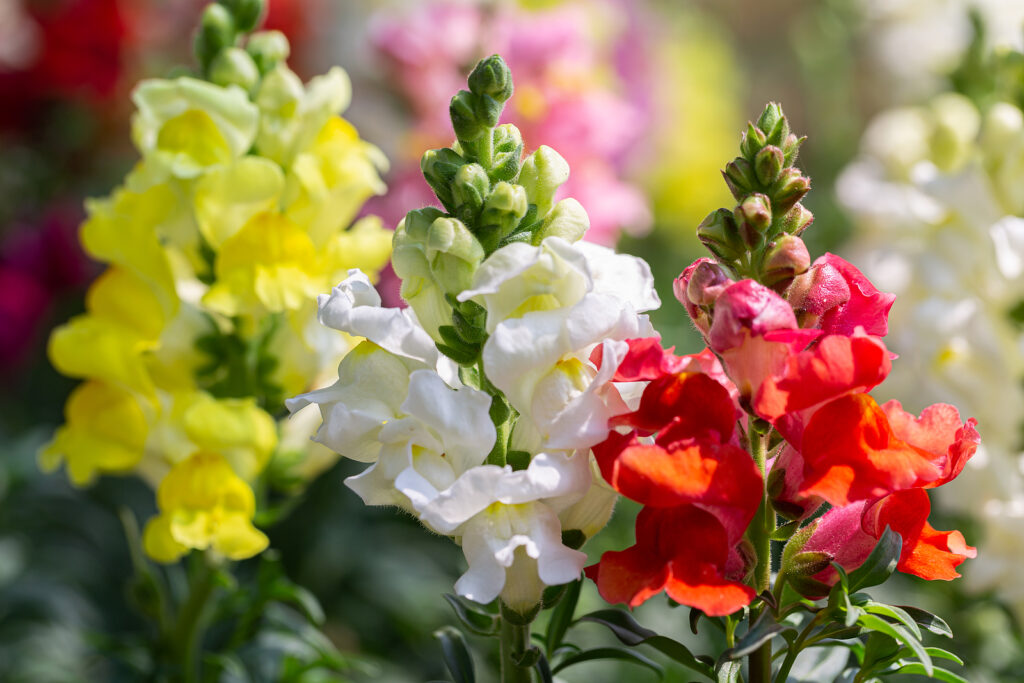
Antirrhinum Overview
Antirrhinum, commonly known as snapdragon, is a popular flowering plant that produces tall, spiky blooms in a wide range of colors, including pink, yellow, red, white, orange, and purple. Native to the Mediterranean region, snapdragons are typically grown as annuals, although they can be short-lived perennials in mild climates. Their unique, dragon-shaped flowers are loved by pollinators like bees and hummingbirds and add vertical interest to gardens.
Snapdragons are available in various sizes:
- Dwarf varieties grow up to 8–10 inches tall.
- Intermediate varieties reach 15–30 inches.
- Tall varieties can grow 30–48 inches, ideal for cutting gardens.
Seven Ways to Use Antirrhinum in the Garden
- Borders and Flower Beds
- Use dwarf snapdragons in the front of borders to create colorful edging.
- Plant taller varieties toward the back of beds for a vertical accent. Combine them with other summer flowers like zinnias, cosmos, or salvia for dynamic layers.
- Cottage Gardens
- Snapdragons are quintessential for cottage-style gardens, where their upright blooms create a whimsical, romantic atmosphere.
- Pair them with other old-fashioned flowers such as hollyhocks, foxgloves, or delphiniums.
- Cutting Gardens
- Tall snapdragons are prized as cut flowers, lasting a long time in floral arrangements.
- Plant a row in a designated cutting garden alongside dahlias or sunflowers for a continuous supply of blooms.
- Containers and Window Boxes
- Dwarf and intermediate varieties thrive in pots or window boxes.
- Combine them with cascading plants like ivy or trailing lobelia for contrast and a full, lush appearance.
- Wildlife Gardens
- Snapdragons attract pollinators, especially bumblebees and hummingbirds.
- Plant them alongside other nectar-rich flowers to create a haven for beneficial wildlife.
- Seasonal Bedding Displays
- Snapdragons are ideal for spring and fall displays, as they tolerate cooler temperatures better than many other annuals. Use them to bridge the gap between seasons in mixed planting schemes.
- Formal Gardens
- In formal or symmetrical garden designs, snapdragons’ upright habit makes them excellent for structured planting arrangements, such as parterres or knot gardens.
Quick Care Tips for Antirrhinum
- Light: Prefers full sun but tolerates partial shade, especially in hot climates.
- Soil: Thrives in well-draining, moderately fertile soil. Amend with compost for best results.
- Watering: Water regularly, especially during dry spells, but avoid waterlogging.
- Deadheading: Remove spent blooms to encourage continuous flowering. Pinch back stems early to promote bushier growth.
- Fertilizing: Use a balanced, water-soluble fertilizer every 4–6 weeks during the growing season.
- Pests and Diseases: Watch for aphids, rust, or powdery mildew. Ensure good air circulation and avoid overhead watering to prevent disease.
Design Ideas with Snapdragons
- Color Blocking: Plant snapdragons in single-color masses for a bold, dramatic effect.
- Mixed Hues: Blend snapdragons of different colors for a playful, cottage-garden vibe.
- Vertical Accents: Use them to punctuate the horizontal spread of groundcover plants like alyssum or creeping thyme.
- Seasonal Displays: Combine snapdragons with pansies and violas in spring or chrysanthemums and asters in fall.
Snapdragons are versatile, low-maintenance plants that bring vertical beauty and vibrant color to any garden.
Get to know snapdragons — Antirrhinum
- Plant type: Short-lived perennial is usually grown as an annual
- Growing Zones and range: Grow as an annual in Zones 2-8; grow as an annual or perennial in Zones 9-11.
- Hardiness: Tender; killed by hard freezes; some strains are heat tolerant
- Optimal temperature range: Day temperatures do not exceed 65°F (18°C); night temperatures 45° to 50°F (7°-10°C).
- Height and width: 12 inches (30cm) for dwarf types; 2 feet (60cm) for intermediate types; 4 feet (1.2m) for tall types; 8-18 inches (20-45cm) wide.
- Form: Low mound-forming or tall and spiky; slender stems carry narrow, bright green leaves and are topped with spikes of tubular flowers
- Flower form: Each bloom forms an upper and lower “jaw”; pinch the side of the flower and it looks like a dragon opening its jaws
- Flower colors: Red, pink, peach, yellow, orange, rust, burgundy, violet, or white
- Bloom time: Spring to Summer in most regions, winter to spring, and fall in warm-winter regions.
- Uses: excellent cutting flower; grow snapdragons in borders
- Garden companions: mugwort (Artemisia ludoviciiana), white phlox, delphinium, iris, and daylily; use dwarf cultivars in rock gardens or pots.
- Common name: Snapdragon
- Botanical name: Antirrhinum majus
- Family: Scrophulariaceae
- Origin: Tropical and subtropical North and South America
Where to plant snapdragons — Antirrhinum
- Plant snapdragons in full sun in Zones 2-9 and Pacific Northwest; plant in light shade in Zones 9-11.
- Grow snapdragons in well-drained, humus-rich to average garden soil.
- Snapdragons need boron in the soil–more than most plants; add borax at a rate of 3 grams per square yard.
- Sow seed outdoors in smoothly prepared soil.
Snapdragon uses
- Antirrhinum is available in three height ranges: tall, intermediate, and dwarf.
- Tall and intermediate forms provide colorful vertical accents in sunny borders.
- Dwarf kinds can be used for edging, in pots, and in rock gardens.
- Medium heights are best for cutting.
When to plant snapdragons — Antirrhinum
- Sow seed in flats from late summer to early spring for transplanting into the garden.
- Sow seed indoors 6 weeks before the last frost; sow seeds thinly in flats or in six-packs; use a clean seed-starting medium.
- In the garden, sow seeds on the soil surface and press them in lightly.
- Sow seed or set out transplants when temperatures are 60° to 70°F (15.6-21°C).
- Set seedlings out in early spring in cold-winter climates; set seedlings out in fall in mild-winter regions.
- Plant snapdragons in spring for summer color. In Zones 9-11, plant in fall or late winter for spring through summer color.
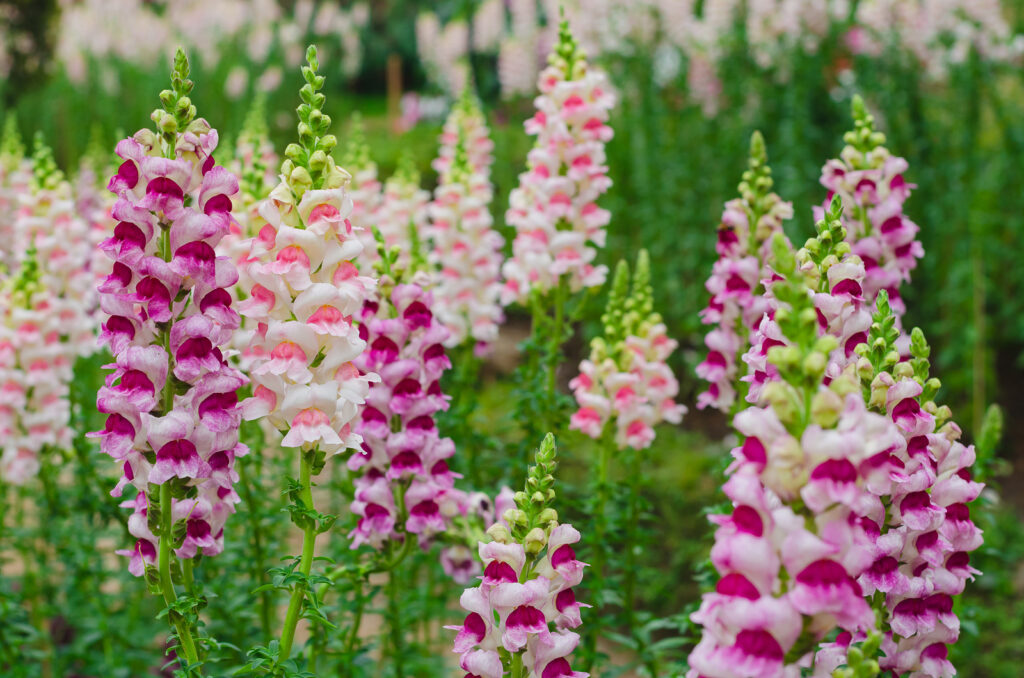
Planting and spacing snapdragons — Antirrhinum
- Space tall and intermediate snapdragons 15 inches (38cm) apart; space dwarf plants 6 inches (15cm) or more apart.
- Plant seeds 3 inches (7.6cm) apart in rows 1 inch (2.5cm) deep; cover seed with 1/8 inch of soil. Keep the seedbed just moist; do not let it dry out.
- For most gardens, snapdragons of intermediate height are best; they produce long stems for cutting but do not require staking.
How to water and feed snapdragon — Antirrhinum
- Feed snapdragons an all-purpose fertilizer every 4 weeks during the flowering time or add a 9-month slow-release fertilizer at planting time.
- Avoid overhead watering which can leave plants susceptible to rust disease.
Snapdragon care
- Stake tall-growing snapdragons to keep them upright.
- Deadhead flowers to keep plants blooming. Leave a few blooming plants in the garden at the end of summer to self-sow for the next season.
- Water to keep the soil evenly moist. Avoid overhead watering which can spread rust.
- Mulch around plants with composted leaves to conserve soil moisture.
- At planting time feed plants with a 5-5-5 fertilizer.
- Temperatures in the high 80sF will slow or stop flowering.
- Remove spent flowers to stimulate new growth.
- Cut plants back by two-thirds if they get leggy; new growth will follow.
- In Zones 8-11, snapdragons will survive through the winter.
Good Products for Seed Starting Success at Amazon:
- Jump Start Germination Station w/Heat Mat Tray, 72-Cell Pack, Dome
- Espoma Seed Starting Mix
- 200 Count- Jiffy 7 Peat Soil Seed Starting Plugs
- Seed Starter Kit with Humidity Dome (120 Cells Total Tray)
- AgrobriteT5 Fluorescent, 2-Foot, Grow Light System
Snapdragon pests and diseases
- Snapdragons are susceptible to blight, leaf spots, root rot, rust, and downy mildew. They can be attacked by leafminers.
- Hose off aphids and mites with soapy water.
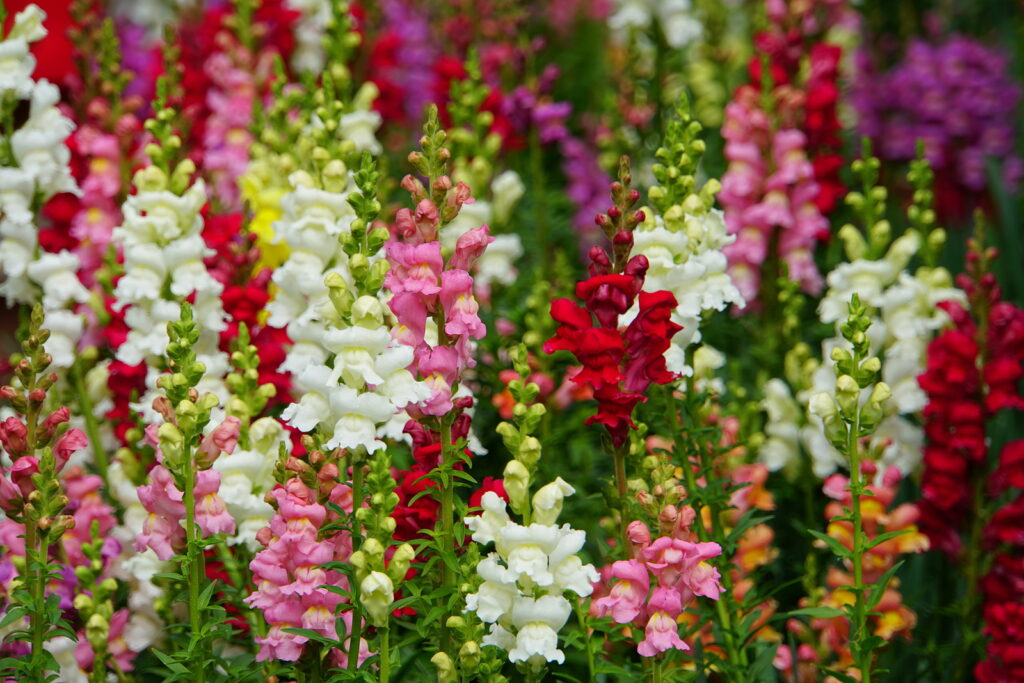
Snapdragon propagation
- Sow seed indoors 6 weeks before the last frost; sow thinly in flats or six-packs filled with clean seed-starting mix.
- Cover seeds less than 1/8 inch deep.
- Seeds will germinate in 8 to 21 days at 60°-70°F (15.6°-21°C). Seeds need light to germinate; grow seedlings in bright sunlight or a few inches below fluorescent light.
- It can take up to 3 months for plants started indoors to be large enough to set in the garden.
- Set seedlings in the garden after hardening off seedlings for 3 days.
- Divide plants in early spring; snapdragons will likely survive in Zones 8 to 11.
- Young plants will not grow in hot weather.
- Snapdragons tend to self-sow if flowers are not deadheaded.
Antirrhinum — snapdragon varieties to grow
- Pocket and Topper strains grow to 3 feet (91cm).
- ‘Black Prince’ grows to 18 inches tall with crimson flowers.
- ‘Double Azalea Apricot’ fragrant, frilly double flowers; grows to 3 feet tall.
- ‘Madam Butterfly’ varied colorful flowers to 3 feet tall.
- ‘Magic Carpet Mix” grows to just 6 inches (15cm) tall.
- ‘Royal Carpet Mix’ grows to 8 inches (20cm) tall.
Snapdragon frequently asked questions
Q: When is the best time to plant snapdragons?
A: You can start snapdragon seeds indoors under fluorescent light six to eight weeks before planting outdoors. Don’t cover the seeds; they need light to germinate. You can set young plants outdoors in spring when the soil has begun to warm up. Don’t set them out too early; they can be killed by a hard frost or freeze.
Q: What is the best location for growing snapdragons?
A: Snapdragons want an open situation, light soil that is well drained, and not too much feeding. They bloom best in cool weather; they do not like heat, though some newer hybrids are heat resistant. Do not overcrowd snapdragons; good air circulation is the best defense against disease.
Q: Can I start snapdragons from seeds planted in the garden?
A: Plant snapdragon seeds in the garden in a bed that is well-drained and has light moderately rich soil. Rake the soil so that it is finely textured and free of pebbles and debris. Sow the seed and then over it very lightly with sand. Protect the seed bed with burlap until the seeds germinate. Keep the soil just moist.
Q: What is the best fertilizer for snapdragons?
A: Prepare the soil with peat moss or dehydrated manure; the soil should not be too rich. Feed snapdragons when they come into flower with a 5-10-5 liquid fertilizer.
Q: How can I support snapdragons that want to lean over?
A: Place stakes or branched twigs in the garden when you plant snapdragons. Tie them to the stakes as soon as they begin to flop over. There are low-growing and base-branching varieties that do not require staking.
Q: How can I get snapdragons to produce more blooms?
A: Pinch the growing tips to induce branching. When flower spikes fade on the first bloom, remove them immediately to encourage a second bloom.
Q: Can you recommend snapdragon varieties to plant?
A: There are many snapdragon varieties to choose from. Floral Carpet is a dwarf variety that grows six to eight inches tall. Little Darling grows 12 to 15 inches tall. Madame Butterfly grows 24 to 30 inches tall. Rocket grows 30 to 36 inches tall and is the most heat resistant. Coronet is a medium-sized plant that is rust-resistant and weather-tolerant.
Q: Can snapdragons be grown as house plants?
A: Snapdragons need a very cool sun porch or bay window with night temperature between 40° and 50°F. Dwarf and rust-resistant varieties are best for indoors. If you start plants in the summer, you can have winter blooms indoors.
Related Articles:

